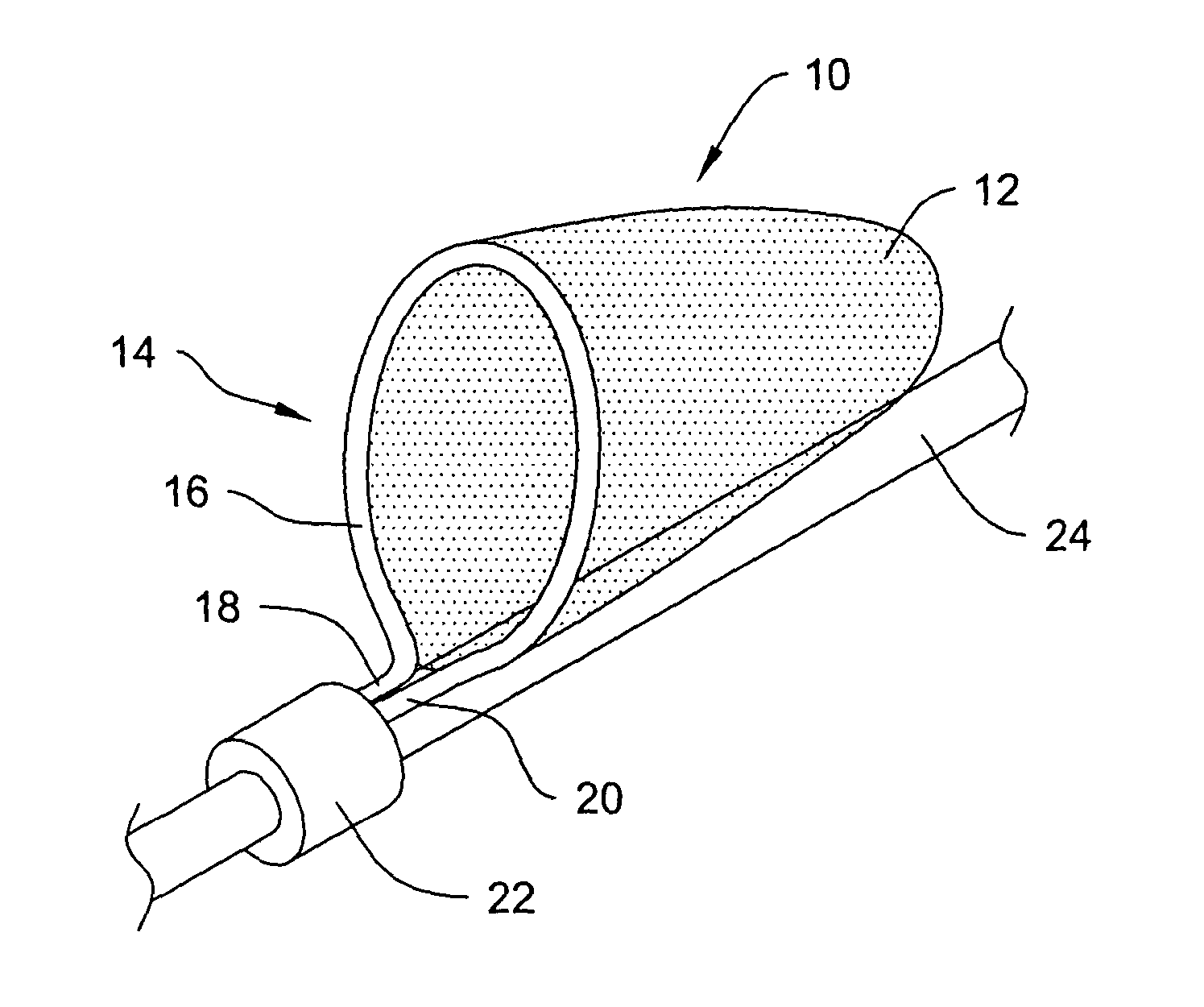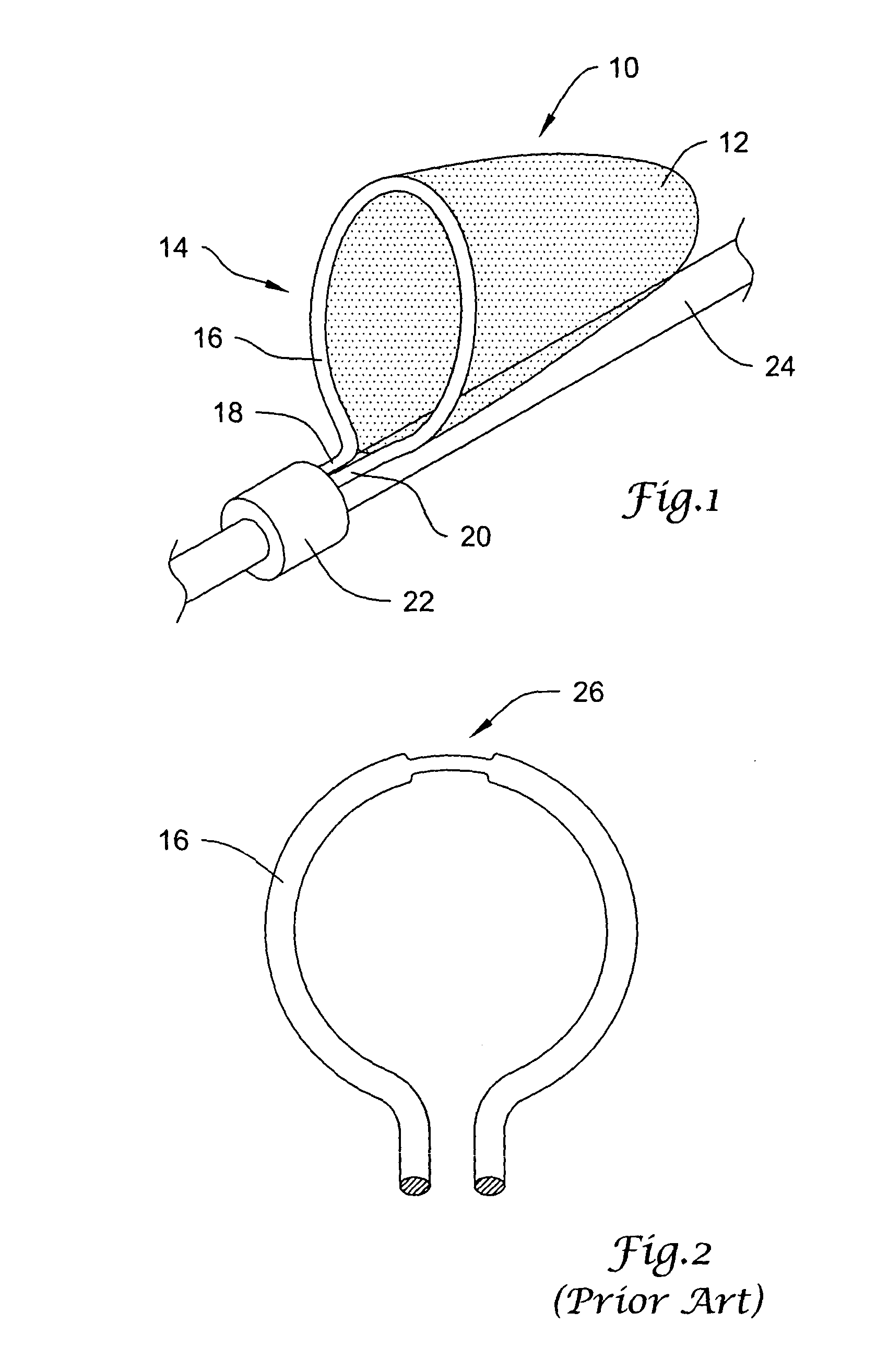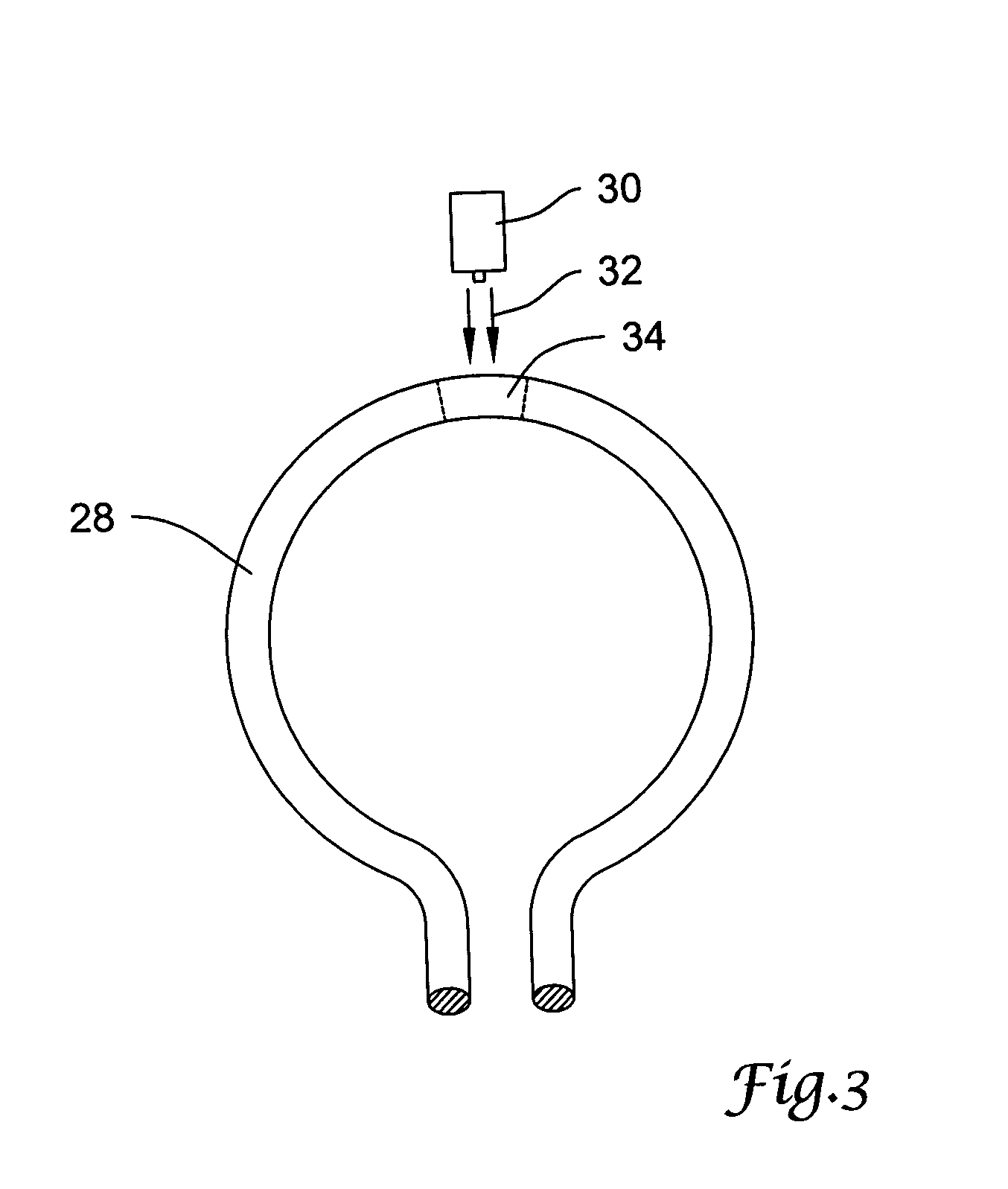Selective treatment of linear elastic materials to produce localized areas of superelasticity
a linear elastic and localized technology, applied in the field of medical devices, can solve the problems of difficult welding, difficult manufacturing and processing steps required to incorporate such materials into medical devices, and difficult welding of nickel-titanium alloys, etc., and achieve the effect of increasing the recoverable strain and imparting flexibility to the material
- Summary
- Abstract
- Description
- Claims
- Application Information
AI Technical Summary
Benefits of technology
Problems solved by technology
Method used
Image
Examples
Embodiment Construction
[0016] The following description should be read with reference to the drawings, in which like elements in different drawings are numbered in like fashion. The drawings, which are not necessarily to scale, depict selected embodiments and are not intended to limit the scope of the invention. Although examples of construction, dimensions, and materials are illustrated for the various elements, those skilled in the art will recognize that many of the examples provided have suitable alternatives that may be utilized.
[0017]FIG. 1 is a perspective view of an illustrative medical device 10 employing a linear elastic material. Medical device 10, illustratively an embolic protection filter, includes a filter membrane 12 coupled to a filter frame 14 or other support structure configured to support the filter membrane 12 in an expanded position within the body. Filter frame 14 includes a wire loop 16 forming a mouth of the filter that receives embolic debris contained in the blood stream. The ...
PUM
| Property | Measurement | Unit |
|---|---|---|
| temperature | aaaaa | aaaaa |
| temperature | aaaaa | aaaaa |
| temperature | aaaaa | aaaaa |
Abstract
Description
Claims
Application Information
 Login to View More
Login to View More - R&D
- Intellectual Property
- Life Sciences
- Materials
- Tech Scout
- Unparalleled Data Quality
- Higher Quality Content
- 60% Fewer Hallucinations
Browse by: Latest US Patents, China's latest patents, Technical Efficacy Thesaurus, Application Domain, Technology Topic, Popular Technical Reports.
© 2025 PatSnap. All rights reserved.Legal|Privacy policy|Modern Slavery Act Transparency Statement|Sitemap|About US| Contact US: help@patsnap.com



